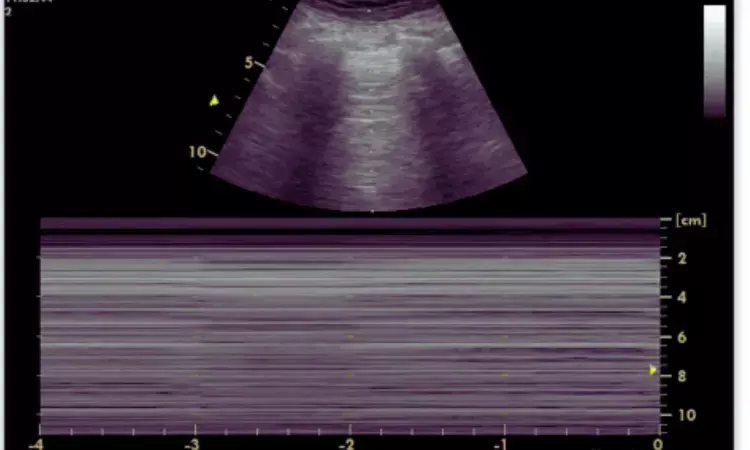- Home
- Medical news & Guidelines
- Anesthesiology
- Cardiology and CTVS
- Critical Care
- Dentistry
- Dermatology
- Diabetes and Endocrinology
- ENT
- Gastroenterology
- Medicine
- Nephrology
- Neurology
- Obstretics-Gynaecology
- Oncology
- Ophthalmology
- Orthopaedics
- Pediatrics-Neonatology
- Psychiatry
- Pulmonology
- Radiology
- Surgery
- Urology
- Laboratory Medicine
- Diet
- Nursing
- Paramedical
- Physiotherapy
- Health news
- Fact Check
- Bone Health Fact Check
- Brain Health Fact Check
- Cancer Related Fact Check
- Child Care Fact Check
- Dental and oral health fact check
- Diabetes and metabolic health fact check
- Diet and Nutrition Fact Check
- Eye and ENT Care Fact Check
- Fitness fact check
- Gut health fact check
- Heart health fact check
- Kidney health fact check
- Medical education fact check
- Men's health fact check
- Respiratory fact check
- Skin and hair care fact check
- Vaccine and Immunization fact check
- Women's health fact check
- AYUSH
- State News
- Andaman and Nicobar Islands
- Andhra Pradesh
- Arunachal Pradesh
- Assam
- Bihar
- Chandigarh
- Chattisgarh
- Dadra and Nagar Haveli
- Daman and Diu
- Delhi
- Goa
- Gujarat
- Haryana
- Himachal Pradesh
- Jammu & Kashmir
- Jharkhand
- Karnataka
- Kerala
- Ladakh
- Lakshadweep
- Madhya Pradesh
- Maharashtra
- Manipur
- Meghalaya
- Mizoram
- Nagaland
- Odisha
- Puducherry
- Punjab
- Rajasthan
- Sikkim
- Tamil Nadu
- Telangana
- Tripura
- Uttar Pradesh
- Uttrakhand
- West Bengal
- Medical Education
- Industry
Study spells Caution: Lung Ultrasound May Underdiagnose Pneumothorax Diagnoses in Trauma Cases

USA: A recent study published online in Surgery highlights that lung ultrasound may underdiagnose clinically significant pneumothorax. The research reveals that ultrasound used during initial trauma assessments shows low sensitivity and a high rate of false negatives.
"Given that many of these false-negative results are clinically significant and necessitate thoracostomy, the researchers caution against relying solely on chest ultrasonography for pneumothorax screening."
While chest CT is considered the gold standard for diagnosing traumatic pneumothorax, supine chest X-ray and lung ultrasound are commonly utilized for quick confirmation or exclusion of this injury during initial resuscitation. Recent advancements in ultrasound technology have led some reports to suggest that its performance may rival chest X-rays. However, the reliability of ultrasound in this context remains uncertain.
Against the above background, Jarrett E. Santorelli, UC San Diego School of Medicine, San Diego, CA, and colleagues conducted a prospective study based on the hypothesis that chest ultrasonography would exhibit low sensitivity in detecting clinically significant pneumothorax.
For this purpose, the researchers conducted a prospective observational analysis of patients with blunt chest trauma at a level 1 trauma center. The patients underwent supine chest radiography and chest ultrasonography before any intervention, along with confirmatory computed tomography imaging. All chest ultrasounds were performed in the trauma bay by a registered sonographer, and all imaging was evaluated in real-time by an attending trauma surgeon and radiologist.
Based on the study, the following findings were made:
- Of 2,185 patients screened with a diagnosis of blunt thoracic trauma, 1,489 patients had chest radiography, chest ultrasonography, and confirmatory computed tomography and were included for analysis.
- Patients were 71% male, with a median age of 42 years, and a mean Injury Severity Score of 6.
- The sensitivity of chest ultrasonography to detect pneumothorax was low.
- Chest ultrasonography had a false negative rate of 72%, with 22% undergoing tube thoracostomy.
- Patients with false negative examinations had lower initial O2 saturation and systolic blood pressure and were more likely to have rib fractures compared with true negative chest ultrasonography examinations.
The prospective analysis revealed that lung ultrasound has lower sensitivity for detecting traumatic pneumothorax compared to traditional supine chest X-ray when used as a screening tool for all trauma patients.
"This finding challenges recent studies that claim LUS is superior for this purpose. We recommend continuing to utilize chest X-ray and ultrasound as complementary tools in the ATLS primary survey, as their combined sensitivity is greater than that of either examination alone. Additionally, we advise caution in relying solely on sonography for screening traumatic pneumothorax," the researchers concluded.
Reference:
Santorelli, J. E., Marshall, A., Perkins, L., Adams, L., Kurth, L., Doucet, J. J., & Costantini, T. W. (2024). Lung ultrasonography underdiagnoses clinically significant pneumothorax. Surgery. https://doi.org/10.1016/j.surg.2024.08.013
Dr Kamal Kant Kohli-MBBS, DTCD- a chest specialist with more than 30 years of practice and a flair for writing clinical articles, Dr Kamal Kant Kohli joined Medical Dialogues as a Chief Editor of Medical News. Besides writing articles, as an editor, he proofreads and verifies all the medical content published on Medical Dialogues including those coming from journals, studies,medical conferences,guidelines etc. Email: drkohli@medicaldialogues.in. Contact no. 011-43720751


